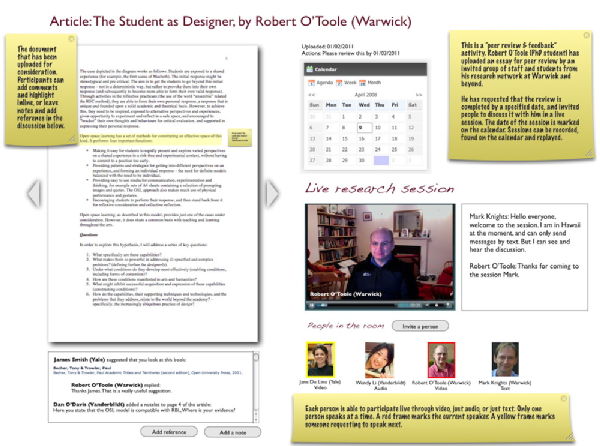All entries for Tuesday 01 February 2011
February 01, 2011
About my design studio, and my new drawing/design board.
I've recently replaced one of my flat tables with an A1 adjustable drawing/design board. It's great, for my design work and for my research. I have A1 sheets that I can clip to it, and lots of post-it notes. Having such a big canvas to work on makes a great difference to my work. When I finish working on something, I can un-clip it and pack it away. It's height and angle adjustable, so I can work standing or sitting. It even folds completely flat, so can be used as a height adjustable table (ideal for doing stop-motion animation).
Here's a photo of the board and the rest of my studio set up (with an iMac):
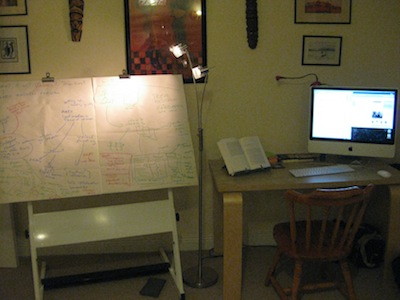
Of course it has also been colonised by Lorenzo. He has designed scientific experiments on it, written storyboards, and created diagrams:
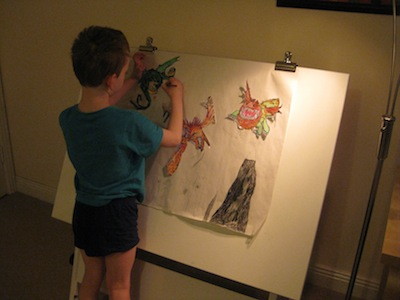
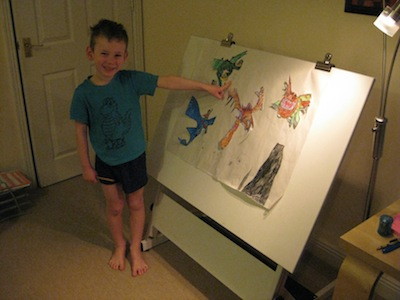
It's also useful for planning expeditions:
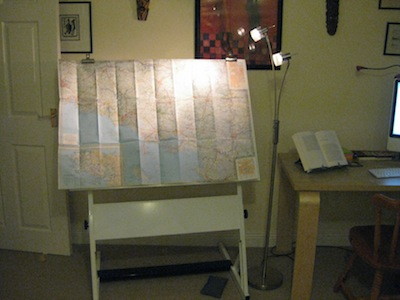
Design for online peer review and feedback
I have been investigating the operation of peer review and feedback. After discussing the process with a professor and a research student in History, I have sketched out this design. It is also applicable to research based learning activities and the development of academic writing at all HE levels (from undergraduate to professional academic research). Important considerations are:
- Simplicity (we need to engage people who have very little time for training).
- Access for video, audio and just text based users.
- International, inter-institution operation (the particular case in question has users at Vanderbildt and Yale).
- Put the author in control - they set the peer review process rolling, invite participants and set up live events.
- Connection to online libraries of references (the researchers have in mind integration with an online collaborative reference database).
- The ability to record and replay discussions.
- Ability to annotate (but not co-edit) documents.
- Threaded notes.
- A calendar, on which live events can be scheduled, and stages in the review process marked.
Similar use cases exist across the arts, humanities and social studies research communities (as well as in academic skills and creative writing), with interesting variations. For example, the author may wish to follow up the initial review by writing a new version of the document and uploading it for further, linked review. In some cases, they may wish to review more than one article at a time. In a similar way, they may wish to collectively review primary source articles from, for example, Early English Books Online (EEBO), which are available in PDF format.
Here is a sketch (click to enlarge). The large yellow post-its explain the design:
 Robert O'Toole
Robert O'Toole

 Please wait - comments are loading
Please wait - comments are loading
